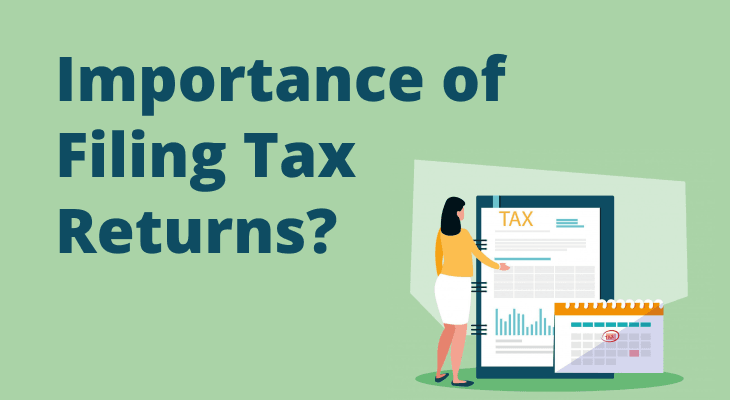
How Capital Gains Tax Differs from Income Tax
India's tax system includes different kinds of levies, two of which are income tax and capital gains tax. Income tax is levied on incomes like salaries, business profits, and rent, according to a slab system that is progressive. In contrast, capital gains tax is levied on gains made on the sale of capital assets like property, stocks, or mutual funds. These two taxes not only vary in the source of their income but also in calculation and rates applicable to them.
Recognizing the differences between income tax and capital gains tax is important to efficient financial planning and compliance. Whereas income tax is differentiated based on income level, capital gains tax rates differ by asset type and holding period. For instance, short-term capital gains on equities are taxed at 20%, whereas long-term gains exceeding ₹1.25 lakh are taxed at 12.5% . Recognizing these differences ensures accurate tax reporting and helps in optimizing tax liabilities.
What is Income Tax?
Income tax in India is a direct levy imposed by the Government of India on the earnings of individuals and entities. Governed by the Income Tax Act, 1961, it encompasses various income sources, including salaries, business profits, capital gains, and other earnings. This tax is progressive in nature, meaning that higher income levels are taxed at higher rates, ensuring an equitable distribution of the tax burden. The revenue generated from income tax serves as a primary source for the government, facilitating public services, infrastructure development, and social welfare programs. Administered by the Central Board of Direct Taxes (CBDT), the income tax system plays a crucial role in the nation's economic framework, promoting transparency and accountability in financial matters.
Classification of Income:
The Act categorizes income into five distinct heads:
- Income from Salary: Encompasses wages, pensions, gratuities, and other employment-related earnings.
- Income from House Property: Pertains to rental income from owned properties.
- Profits and Gains from Business or Profession: Includes profits derived from business activities or professional services.
- Capital Gains: Refers to profits from the sale of capital assets like property, stocks, or bonds.
- Income from Other Sources: Covers residual income not classified under the above heads, such as interest income, dividends, or lottery winnings.
Tax Regimes:
Taxpayers can choose between two regimes:
- Old Tax Regime: Offers a variety of exclusions and deductions under sections like 80C, 80D, and others, allowing taxpayers to reduce their taxable income.
- New Tax Regime: Implemented to make the tax system simpler, it offers lower tax rates but limits most deductions and exemptions.
The selection between regimes is based on personal financial conditions and eligibility for deductions. Taxpayers must file yearly returns, reporting their income and paying taxes according to the relevant slabs.
What is Capital Gains Tax?
Capital Gains Tax (CGT) in India is imposed on earnings arising from the sale of capital assets like property, shares, mutual funds, gold, and bonds. Depending on the duration of holding the asset, tax treatment is done under either short-term or long-term gains.
Short-Term Capital Gains (STCG):
- Definition: Gains from assets held for a short duration.
- Equity Shares and Equity-Oriented Mutual Funds: Assets held for less than 12 months.
- Immovable Property (e.g., real estate): Assets held for less than 24 months.
- Other Assets (e.g., gold, debt funds): Assets held for less than 36 months.
- Tax Rate:
- Equity Shares and Equity-Oriented Mutual Funds: 15% under Section 111A of the Income Tax Act.
- Other Assets: Taxed as per the individual's applicable income tax slab rates.
Long-Term Capital Gains (LTCG):
- Definition: Gains from assets held for a longer duration.
- Equity Shares and Equity-Oriented Mutual Funds: Assets held for more than 12 months.
- Immovable Property: Assets held for more than 24 months.
- Other Assets: Assets held for more than 36 months.
- Tax Rate:
- Equity Shares and Equity-Oriented Mutual Funds: 10% on gains exceeding ₹1 lakh, without indexation benefits.
- Other Assets: 20% with indexation benefits.
Exemptions and Deductions:
- Sections 54, 54EC, and 54F of the Income Tax Act grant certain exclusions, subject to certain requirements.
- For instance, reinvesting the proceeds from the sale of a residential property into another residential property within a stipulated time frame can provide tax relief.
Understanding the nuances of capital gains tax is crucial for effective financial planning and compliance with tax regulations.
Key Differences Between Capital Gains Tax and Income Tax
Aspect | Income Tax | Capital Gains Tax |
Nature of Income | Earnings from various sources | Profit from sale of capital assets |
Tax Rates | Progressive slabs (5% to 30%) | Fixed rates (e.g., 10% for LTCG on equities) |
Tax Regime Options | Old and new regimes with different slabs | Specific rates based on asset type and holding period |
Deductions | Various deductions under sections like 80C | Limited deductions; indexation benefits for certain assets |
Filing Forms | ITR-1, ITR-2, ITR-3, etc., based on income type | ITR-2 or ITR-3, depending on the nature of capital gains |
Capital Gains Tax vs. Income Tax Example
Scenario: An individual earns a salary of ₹12,00,000 annually and sells equity shares held for over a year, realizing a profit of ₹1,50,000.
- Income Tax: The salary falls under the income tax slab rates. Assuming the new tax regime, the tax liability would be calculated based on the applicable slabs without deductions.
- Capital Gains Tax: The profit from the sale of equity shares qualifies as LTCG. The first ₹1,00,000 is exempt, and the remaining ₹50,000 is taxed at 10%, resulting in a tax liability of ₹5,000.
This example illustrates how different income sources are taxed distinctly under the Indian tax system.
How to Report Each Tax While Filing ITR?
Income Tax Reporting:
- Choose the Appropriate ITR Form: For salaried individuals without capital gains, ITR-1 is suitable.
- Declare Income: Report income under the relevant heads, such as salary, house property, etc.
- Claim Deductions: Under the old regime, claim deductions like 80C, 80D, etc.
- Compute Tax Liability: Calculate the tax based on the chosen regime and pay any outstanding amount.
Capital Gains Tax Reporting:
- Select the Correct ITR Form: Use ITR-2 or ITR-3 if you have capital gains.
- Provide Asset Details: Mention the sale and purchase details of the capital asset, including dates and amounts.
- Calculate Gains: Compute STCG or LTCG based on the holding period and apply indexation if applicable.
- Report in Schedule CG: Fill in the Capital Gains schedule in the ITR form with accurate details.
Ensure all necessary documents, such as sale deeds, broker statements, and investment proofs, are available for accurate reporting.
Conclusion
Appreciation of differences between income tax and capital gains tax is fundamental to correct tax compliance and financial planning. Income tax applies to a wide range of earnings, including salaries, trading profits, and rents, and is usually worked out in proportion to the progressivity of the slabs. Capital gains tax, however, focuses exclusively on gains made by the sale of assets like property, stocks, or mutual funds. The capital gains tax rates vary based on the holding period of the asset, with longer holdings generally being taxed lower.
Knowledge of applicable rates, allowances, and requirements for reporting in the case of income tax and capital gains tax helps taxpayers pay their dues timely and efficiently as well as without any kind of penalty. As an example, long-term capital gains on stocks above ₹1,00,000 are subjected to a taxation of 10% without considering indexation benefit, whereas short-term gains attract a taxation of 15%. By understanding these disparities, people are able to make informed choices, minimize their tax burdens, and harmonize their investment plans with their objectives.
FAQ
What is the main difference between income tax and capital gains tax
Income tax applies to earnings like salary or business income, while capital gains tax is levied on profits from selling capital assets.
Are capital gains included in income tax calculations?
Yes, capital gains are a part of total income but are taxed separately under specific provisions.
Can I claim deductions on capital gains?
Certain exemptions are available under sections like 54 and 54F, subject to conditions.
Which ITR form should I use for capital gains?
ITR-2 or ITR-3, depending on the nature and amount of your capital gains.
Is indexation benefit available for all capital assets?
Indexation is available for certain assets like real estate but not for equities.
Do I need to pay advance tax on capital gains?
Yes, if your total tax liability exceeds ₹10,000 in a financial year.
How are short-term and long-term capital gains taxed?
STCG is taxed at 15% for equities, while LTCG over ₹1 lakh is taxed at 10% without indexation.
Can I set off capital losses against other income?
Capital losses can be set off against capital gains, but not against other income heads.
Are there any exemptions for reinvesting capital gains?
Yes, reinvestment in specified assets can provide exemptions under certain sections.
What documents are required to report capital gains?
Accurate reporting requires investment proofs, broker statements, and sale and purchase agreements.


